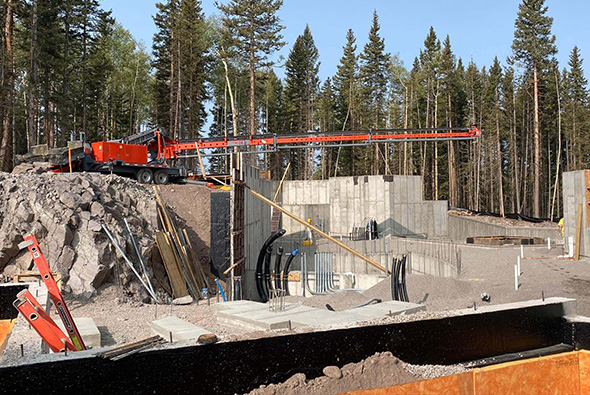Residential estimating is a crucial process in the construction industry, ensuring accurate budgeting and cost control for home building and renovation projects. A well-prepared estimate helps homeowners, contractors, and developers allocate resources efficiently, avoid financial pitfalls, and ensure project success.
This article explores residential estimating, its key components, benefits, technological advancements, and best practices for achieving accurate cost assessments.
What Is Residential Estimating?
Residential estimating involves calculating the total cost of constructing or renovating a home. This includes material costs, labor expenses, equipment charges, and additional costs such as permits and contingencies. Estimators use software tools, historical data, and industry expertise to generate precise cost assessments.
Key Components of Residential Estimating
- Material Takeoff
- Determines the quantity and cost of essential materials like lumber, concrete, steel, drywall, roofing, and insulation.
- Includes fixtures such as doors, windows, flooring, and cabinetry.
- Labor Cost Calculation
- Estimates wages for skilled and unskilled labor, including carpenters, electricians, plumbers, and painters.
- Considers project complexity, location, and labor availability.
- Equipment and Tool Costs
- Accounts for heavy machinery rentals, scaffolding, power tools, and transportation expenses.
- Includes the cost of safety gear and construction site utilities.
- Structural and Foundation Costs
- Estimates expenses for excavation, concrete pouring, reinforcement, and waterproofing.
- Covers framing and load-bearing elements of the home.
- MEP (Mechanical, Electrical, and Plumbing) Costs
- Evaluates costs for HVAC systems, electrical wiring, plumbing fixtures, and piping networks.
- Includes energy-efficient and smart home system integrations.
- Interior and Exterior Finishing Costs
- Covers painting, flooring, cabinetry, countertops, and lighting fixtures.
- Includes landscaping, driveway construction, and fencing.
- Permit and Compliance Costs
- Accounts for local building permits, zoning regulations, and environmental compliance.
- Ensures adherence to safety codes and inspection fees.
- Contingency and Miscellaneous Costs
- Allocates extra funds for unforeseen expenses, design modifications, or price fluctuations.
- Covers project management and administrative expenses.
Benefits of Residential Estimating
1. Accurate Budgeting and Cost Control
- Prevents budget overruns by providing a detailed financial roadmap.
- Allows homeowners to plan financing and avoid unexpected expenses.
2. Enhanced Project Planning and Scheduling
- Ensures materials, labor, and equipment are procured on time.
- Helps in setting realistic project deadlines and avoiding delays.
3. Competitive Bidding for Contractors
- Enables contractors to submit precise and competitive bids.
- Enhances profitability by preventing cost underestimation.
4. Regulatory Compliance and Risk Reduction
- Ensures compliance with building codes and environmental standards.
- Minimizes risks related to legal issues and safety violations.
5. Optimized Resource Allocation
- Reduces material wastage and enhances labor productivity.
- Supports sustainable construction practices.
Technological Advancements in Residential Estimating
1. Estimating Software Tools
- Tools like PlanSwift, Buildertrend, and CoConstruct automate material takeoff and cost calculations.
- Reduces errors and improves accuracy.
2. Building Information Modeling (BIM)
- Enhances 3D visualization and collaboration in residential project planning.
- Helps in detecting design conflicts before construction begins.
3. AI and Predictive Analytics
- Uses historical data to generate more precise cost estimates.
- Identifies potential savings and cost-effective alternatives.
4. Cloud-Based Collaboration
- Enables real-time updates and remote access for stakeholders.
- Improves communication between contractors, architects, and homeowners.
5. Energy Modeling and Sustainability Assessments
- Assesses energy efficiency and cost savings from green building materials.
- Supports LEED-certified and eco-friendly home construction.
Best Practices for Residential Estimating
- Use Up-to-Date Pricing Data
- Regularly update material and labor cost databases to reflect market changes.
- Consider location-based cost variations.
- Incorporate Detailed Scope of Work
- Clearly define project specifications, materials, and work phases.
- Prevents scope creep and miscommunication.
- Account for Long-Term Maintenance Costs
- Factor in costs for future repairs, HVAC servicing, and energy consumption.
- Offer homeowners cost-benefit comparisons of different materials.
- Evaluate Site Conditions and Project Complexity
- Assess factors like soil conditions, accessibility, and weather constraints.
- Adjust estimates based on whether the project is new construction or renovation.
- Collaborate with Architects and Engineers
- Work closely with design professionals to ensure accurate structural estimates.
- Address potential conflicts between design plans and budget constraints.
Choosing the Right Residential Estimating Service
When selecting a residential estimating service, consider:
- Industry Experience: Look for a provider with expertise in residential cost estimation.
- Technology Use: Ensure they use modern estimating software for accuracy.
- Comprehensive Service Offerings: Choose a provider that covers all aspects of home construction estimating.
- Transparent Pricing: Compare pricing structures and service quality before hiring.
- Customer Support and Revisions: Opt for a provider that offers revisions and ongoing assistance.
Conclusion
Residential estimating is essential for accurate cost planning, efficient resource management, and successful home construction projects. With advancements in estimating software, AI-driven analytics, and cloud-based collaboration, the estimation process has become more precise and streamlined.
Investing in professional residential estimating services helps homeowners, contractors, and developers achieve better financial planning, reduce project risks, and ensure high-quality construction outcomes.


